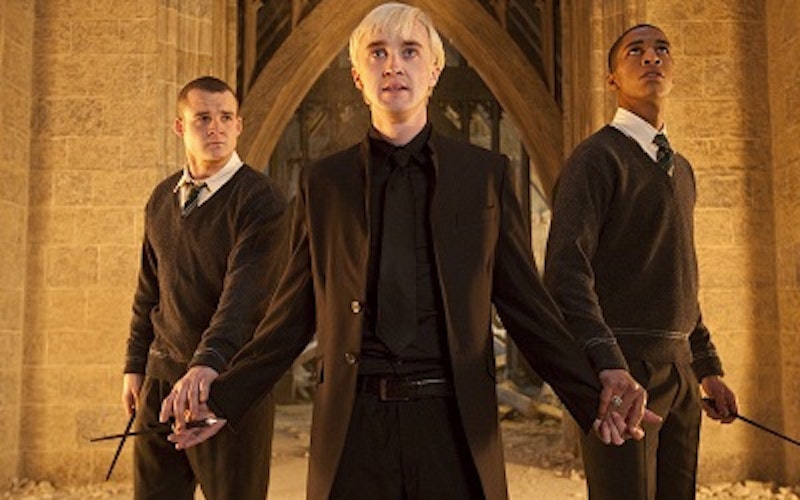
Movies
Why Draco Malfoy is at the Heart of 'Harry Potter'
In a movie franchise as colossal as “Harry Potter,” it’s often the little things that matter.
As “Harry Potter and the Deathly Hallows – Part 2” comes to a close – and with it 10 years of movie wizardry - the camera tracks along Platform 9 ¾ of King’s Cross Station, where a gaggle of kids awaits to board the Hogwarts Express (those who don’t know how the series ends might want to skip the rest of this paragraph). We’re 19 years after the movie’s climax, watching Harry, Hermione and Ron send their own children off to school. Amidst the familiar faces we notice one, off to the side, that doesn’t seem to belong. There with his young family, smiling as the Potters pass, is an older Draco Malfoy (Tom Felton), the schoolboy nemesis of Harry the hero.
This offends our moviegoing sense of justice, which has been trained by countless revenge flicks to expect bad guys’ heads on platters. Yet it’s something the series has been willing to do all along. The Potter films have almost always prioritized reconciliation over vengeance. Draco’s presence in the movie’s coda reinforces one of the series’ distinctly Christian themes: that of restorative justice. Championed by theologian N.T. Wright in “Evil and the Justice of God” and practiced by the Truth and Reconciliation Commission in South Africa, restorative justice recognizes evil as evil and holds those accountable for the wrong they’ve done, yet it also allows an opportunity for communion among all parties.
Consider the many characters from the Potter films who receive a form of restorative justice by the time we reach the finale. Most of these folks aren’t good or evil, but rather – like all of us - squirming somewhere in between. The entire Malfoy family and Severus Snape, above all, yet also Percy Weasley, Mr. Ollivander, Professor Slughorn. Each of these and others unwittingly, wittingly or half-wittingly aids the purely evil Voldemort in his quest to crush Harry and rule with absolute power.
True to the diabolical nature of a devil, Voldemort (Ralph Fiennes) not only encourages these spiritual compromises, he even taunts his victims for making them. “How can you live with yourself, Lucius?” he hisses at Draco’s father in “Part 2,” dementedly delighted at the sort of betrayal the Malfoy family has perpetrated throughout this tale.
This time around, even Harry (Daniel Radcliffe) is somewhat complicit. It’s revealed (another spoiler ahead) that he carries within him a piece of Voldemort’s soul. This plays into the series’ sacrificial theme – Harry must die if Voldemort is to be defeated – yet it also emphasizes the idea that all of us have been born into original sin. Even Harry has duplicity within him, a fact eerily visualized as Voldemort and Harry struggle and their faces seemingly meld into a single warped image.
And so, the movie suggests, we’re all warped, but not without hope. When Harry rescues Draco from a towering inferno in “Part 2,” it’s because he knows goodness still lies within the conniving fiend. The coda at King’s Cross Station, then, is nothing less than a vision of God’s coming kingdom, when we will be reunited with dear family and friends, yes, but also with those of God’s children who may have, at one time, hurt us and the ones we love. We’re used to seeing heroes who are blessed by God’s grace and forgiveness. The “Harry Potter” phenomenon reminds us that he sometimes chooses to bless the villains too.
(Photo courtesy of Warner Bros. Pictures.)
Topics: Movies